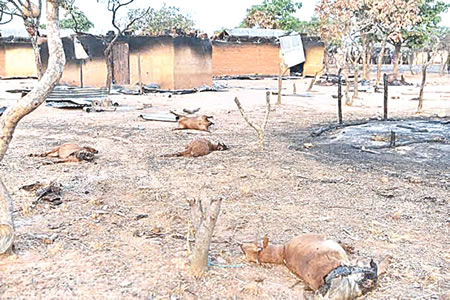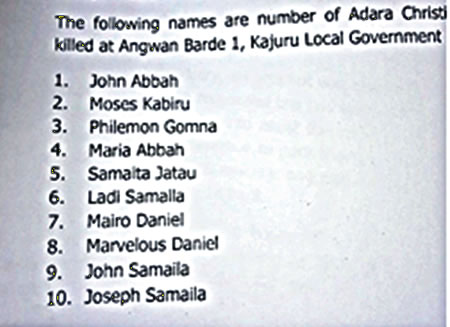SANYA ADEJOKUN, who was in Kajuru and Kachia, Kaduna State as part of a fact-finding mission to the crisis-prone Southern Kaduna, writes on the recent cycle of violence, noting that there are perceived exaggerations concerning the number of casualties and that as things stand there is probably no end in sight to the orgy of violence.
When news broke in the early hours of Tuesday, February 26, 2017, that there were fresh killings of Adara people in Southern Kaduna by suspected Fulani herdsmen, close watchers of events in the area were not surprised as mass murders have become a recurring decimal. The relationship between the Fulani and local ethnic groups there has become one of agreed mutual destruction. Once Governor Nasir el-Rufai announced in the afternoon of February 15 that 66 Fulani men had been murdered in Southern Kaduna, it was just a matter of time before Kajuru people were murdered in apparent reprisal.
According to Mrs. Paulina Irimiya, a resident of Maro Karami village in Kajuru Local Government Area, the latest attacks started around 6:30 a.m. as she and some other villagers attended an early church programme. It was heralded by sporadic gunshots, prompting the worshippers to take to their heels. Irimiya said the attackers, suspected to be Fulani people, razed the whole village while pursuing villagers into the bush.
“It all started while we were in the church during women’s fellowship in ECWA Church when we heard gunshots and we all went out. We saw some of the houses being burnt by the attackers and they were chasing people into the bush to kill them. I do not know the whereabouts of my family members. I am on my way to another village that is close to ours” she told Sunday Tribune.
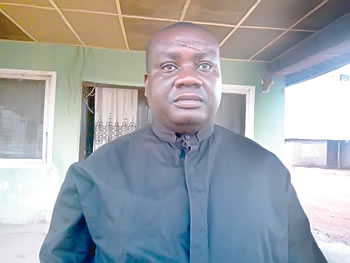
Although Irimiya could not tell the number of casualty, another villager who simply identified herself as Rachael said she counted at least six bodies. She said some herders suspected to be Fulani, stormed the village in the early hours of Tuesday in search of their lost cows but things took a new turn when they started shooting at people.
“Many houses were burnt including the church where women where having their fellowship. As I am talking to you right now, I have lost my uncle and my grandfather and I have counted four other corpses,” she said.
The situation was eventually brought under control when soldiers arrived.
Tinubu must be prosecuted over 2 cash loaded bullion vans, says Olabode George
On Wednesday, February 20, 2019 during an investigative visit to parts of Kajuru Local Government by a group of journalists, two Fulani herdsmen, Lawal Adamu and Babana Yusuf, were met and they claimed that shortly before dawn on February 11, 2019 at Angwan Daku, Rigan Wakili Salisu and five other Fulani communities, “they (Adara people) came to attack us, though we have been living in peace with them over the years.”
Adamu (39), who has been living in the community since childhood, continued: “we cook together and sometimes they do cook for us during celebrations. That was the tradition. I grew up to meet that and I don›t know the motives behind this tradition; the only thing is we don’t marry ourselves.
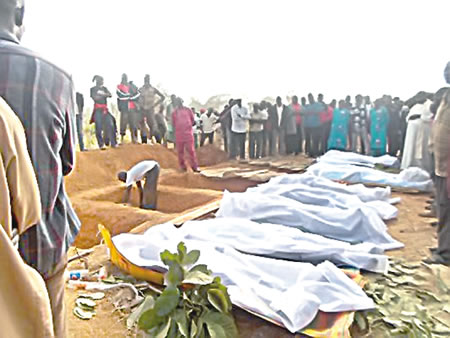
“We suspect that the killers were Adara people. I spent five days burying dead bodies before the governor’s visit, and I can tell you that 131 Fulanis were killed. We are yet to know the whereabouts of seven of our brothers or their bodies which made the figures 131. Thirty-seven people were buried here (by a stream in Angwan Daku) in the presence of security agencies who took the pictures. I am the one who gave the figures of the people killed to the governor when he visited us.”
Babana Yusuf on his own part also insisted that it was Adara people “who came to attack us shortly before morning prayer.” He, however, added that he was not a resident of the places attacked. He somewhat contradicted his colleague when he said that after burying the initial 66 people that was first claimed by Governor el-Rufai, no other corpse was buried or discovered, except the carcasses of some cows that were killed and burnt and left scattered in the bushes. Yusuf claimed that they were still looking for some cows that ran away during the attacks and had continued to roam wildly since then. He said they were still searching for those lost cows.

Indeed, the riverbank where the two claimed that 37 corpses were buried was oozing with terrible odour, while Rigan Wakili Salisu was completely razed with no structure left without destruction.
But the story of Rigan Daku, Rigan Wakili Salisu and the other Fulani communities, it was said, could have been a reprisal for earlier killings, kidnapping and destruction in some other Adara communities, the latest round of which commenced around February 2018 in Kasuwan Magani, when a girl was allegedly converted to Islam by a young man.
The development spiraled into a religious crisis leaving at least 10 persons dead after a community meeting failed to address the issue. Investigations revealed that since that incident, relationship between the two dominant tribes in Kasuwan Magani (Hausa/Fulani and Adara) never normalised, despite the efforts of the state and local governments.
On Thursday, October 18, 2018, the two tribes engaged themselves in another violent clash which, officially, left 55 persons dead although residents insist that the crisis, which spread to Kaduna metropolis, claimed no fewer than 100 lives. The following day, the Agom of Adara, Dr. Maiwada Galadima, and his wife were kidnapped on his way to a meeting with Kaduna State government officials. Despite paying the ransom demanded by his abductors, the traditional ruler was killed on October 26 and his body was recovered in a bush.
In all the killings and mayhem, Sunday Tribune was told that no perpetrator has been brought to book by the government. Indeed, leaders of the affected communities, it was learnt, had at a town hall meeting with Governor el-Rufai in December lamented that many of those earlier arrested had been released and were moving about freely.

It was also reported that between 10 and 11pm on February, 10 2019, about 75 families, said to be living in the remote rural community of Angwan Barde 1 in Kajuru Local Government and who had already settled in for the night, were woken up by sound of gunshots.
Abba Dan Moris, a member of the community and lector at St. Bernard’s Parish, Idongida who lost five family members during the mayhem said: “I just heard gunshots around 11o’clock in the night. I woke up and asked who they were. I never understood what was happening. I just stayed in my room with my wife to see what God would do. Then I heard voices which signified that they (perpetrators) were Fulani. It seems they were chasing somebody and they have not caught that person and they were saying ‘ande, ande’ that’s to show that they were Fulani men.
“Some people were coming from a party at Ungwar Para; they never knew that something was taking place. Those Fulani people rushed them with guns. They too ran away. They entered the village. Within my house, five people were killed including a pregnant woman. What helped me was that I locked the door on myself. That’s why they could not gain entry. They burnt my brother’s corn barn.”
Corroborating this account, the village Head of Angwan Barde 1, Mr. Daniel Audu, said between 10 and 11 pm on that night, he heard several gunshots and as he went out to confirm what was happening, he saw a woman running towards him crying and trying to wake members of the community “saying that everybody should wake up! Fulani have stormed the community! They will finish us.
“I asked her who are you? She introduced herself, then I discovered that she is a member of this community. Already, members of the community were aware and they came out. From there, I ran into the bush. I remained in the bush until everything was calm.
While claiming ignorance of why the village could have been attacked, the village head said “I don’t have an idea. It is the survivors that revealed that the attackers were Fulani. I was surprised because we had no issues with them. Fulanis don’t even stay in this village. Although sometimes, their cattle destroy our crops, we settle amicably.”
Audu said the Divisional Police Officer in the area visited the village on Monday morning along with his men, saw the dead, inspected the area, gathered the six rearing sticks left by the alleged Fulani killers, gave permission for the dead to be buried and left.
He added however, that since the policemen left, no other government official had visited the village nor was any relief materials sent to them.
Also speaking on killings in Angwan Barde 1 and the seven Fulani settlements killings of February 10 and 11, the Parish Priest, St. Bernard, Idongida, Reverend Father Donatus Okoye said Fulani herdsmen invaded Barde 1 and killed 10 persons including a pregnant woman.
“We were able to retrieve six of their rearing sticks which they abandoned while escaping. We gathered the sticks and all of them confirmed that it was Fulani people that came and carried out the killings. Early in the morning of February 11, we noticed Fulani herdsmen packing from the environment in droves, moving to Kachia Local Government around Crossing, Moladoga in Kachia Local Government. We were then wondering what could be happening that they were leaving. It was confirmed that Fulanis carried out the acts.
“We have pictures confirming that these people were macheted with cutlasses. There is also evidence to prove that the corpses were buried at about 4 o’clock in the evening. Later in the night of the same day, around Maro, Bakira, Angwan Bosa, some unknown gunmen invaded the communities again. We have been trying to trace where these gunmen came from but up till now, we are still searching. They came and started shooting sporadically injuring both Fulani and Adara people. They shot and injured people indiscriminately. So, in that particular incidence, nobody can say which group was responsible. Adara people ran away, while Fulani people also escaped to Iri.”
Okoye challenged el-Rufail to provide evidence that either 66 or 130 Fulani people were murdered by Adara people.

“The issue of killings as stated by Governor el-Rufai alleging that Fulani men were killed, numbering over 100, is not true. Before these unknown gunmen came to carry out this wicked act, most Fulani people had already left the area. Some of them ran to the barracks while others left to Crossing so the story that Fulani men were killed is not true. And the issue of corpses being packed from everywhere around here is not true.
“The governor came on February 16th around 4pm and passed through Iri, because he mentioned that there was war and killing at Iri; but that was false too. At Iri, children were seen playing football as the convoy was passing, with businesses going on and people milling in the streets. Life was as usual. Those who were on the farm continued with their businesses. The governor’s convoy continued on its way to Bakira where life went on as normal. In essence, the issue of corpses lying around is false,” the cleric declared.
According to him, when it was reported that 11 Adara indigenes were murdered by Fulanis, no action was taken by any government whether at the local government, state or federal government level.
“Security agencies were not mobilized to go there. Nothing was said about it by the governor of Kaduna State. I am sure you know that in September/October 2018, there was terrible mayhem leading to colossal loss of lives in Kasuwa Magani, but the governor never went on air to announce the number or the ethnic nationality of the people involved.”
He then challenged the governor “to cause the bodies to be shown. Where are the bodies? Assuming they were killed on Friday, were they already buried on Saturday when the governor visited? That is difficult to believe. It is like tales by moonlight. Nobody saw the dead bodies, (except) the purported grave side that I saw on television and then I saw two goats or rams and a cow and two motorcycles that were burnt.
“Could it be a script? Why was the grave not exhumed? We are in this age where there are processes and procedures. All that is required is to go to court and obtain an order and let this grave be exhumed to prove clearly and if it is proven, the world would know. We shouldn’t be sentimental; we shouldn’t be emotional about anything. This is the standard minimum criteria internationally. There should even be coroner’s inquest. All those things have not been done.
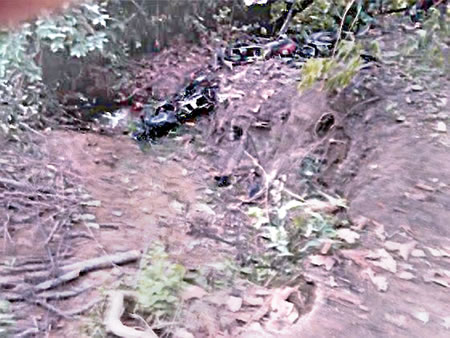
“When you want to exhume bodies from a grave, you move there with representatives of Nigeria Union of Journalists (NUJ), international observers, Nigeria Medical Association (NMA) because if you exhume fresh corpses, we would know; but if you take people to old grave sites, exhumation will be done and then the corpses would be there but NMA would be able to prove whether these corpses are fresh or not. We would not want to be drawn into whether it is one person, 66 people or 130. Tomorrow, el-Rufai is likely going to wake up and say the figure has risen to 1,000. Assuming without conceding that the casualty figure is even 1,000, we want proof because there is a contention now on the figure.”
The state Commissioner of Police, Mr. Ahmad Abdulrahman, while speaking with Sunday Tribune, however, disagreed with both el-Rufai and Lawal Adamu on the number of Fulani casualties.
“As far as police is concerned, investigation is still in its embryonic stage. As I speak with you now, my men are in the bush plus SEMA and other civil society organisations and volunteers who felt the need to assist in finding out the actual happenings in the areas,” the state number one police officer explained.

